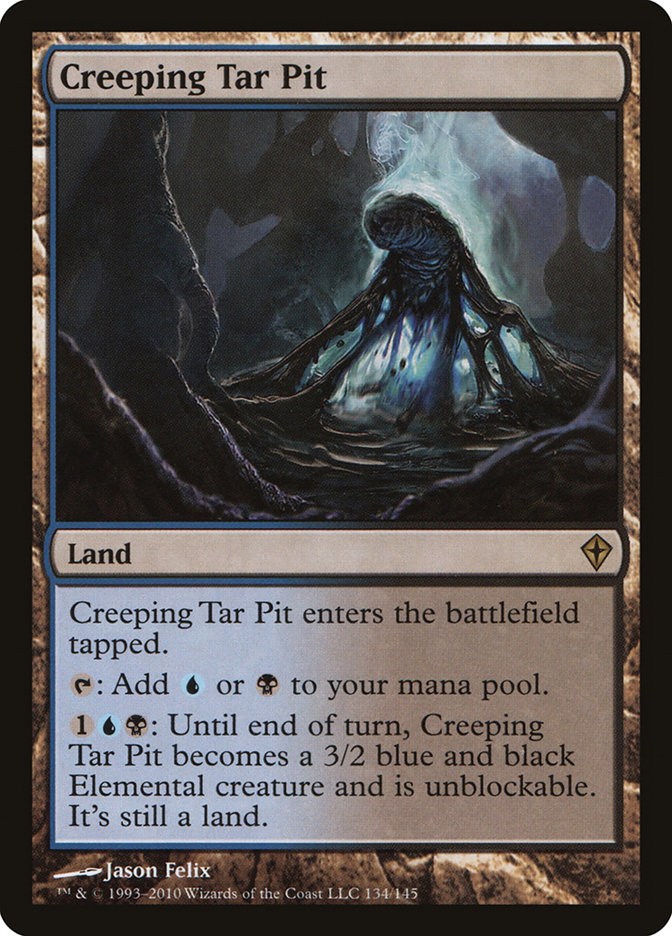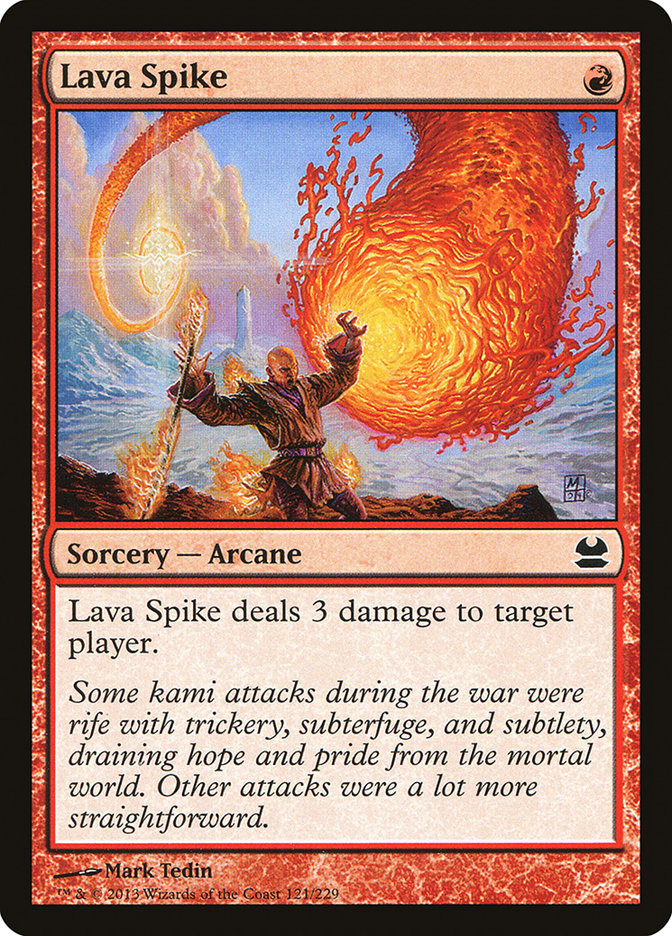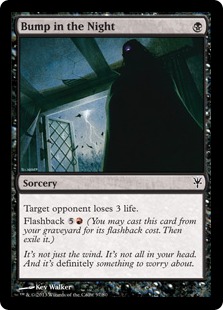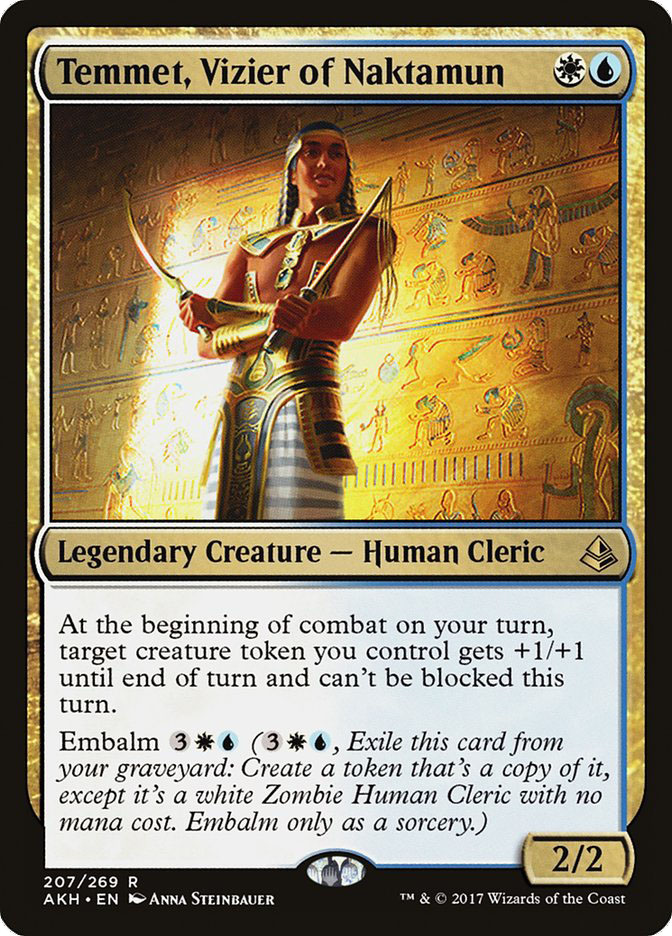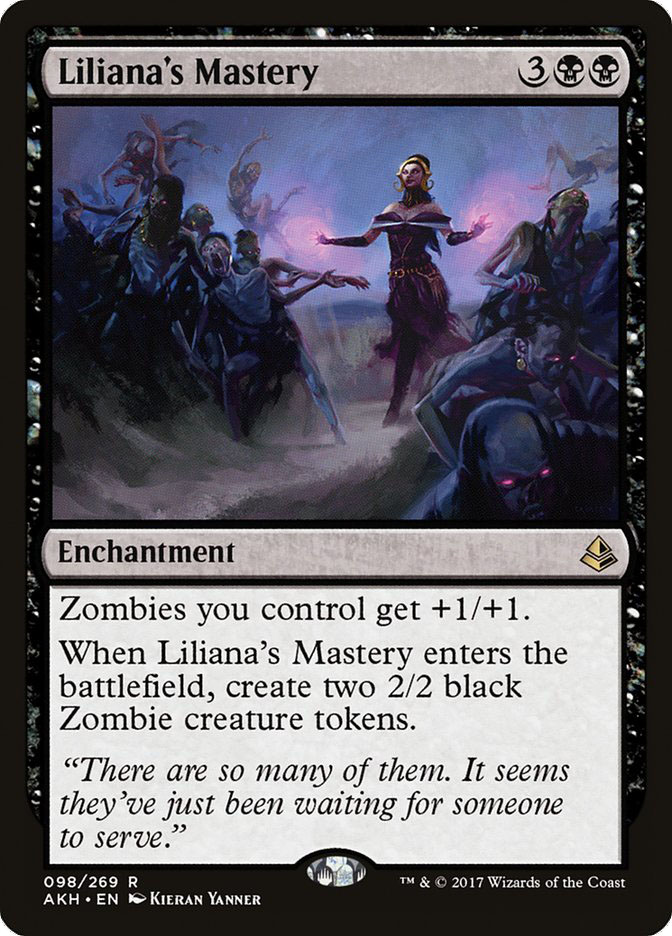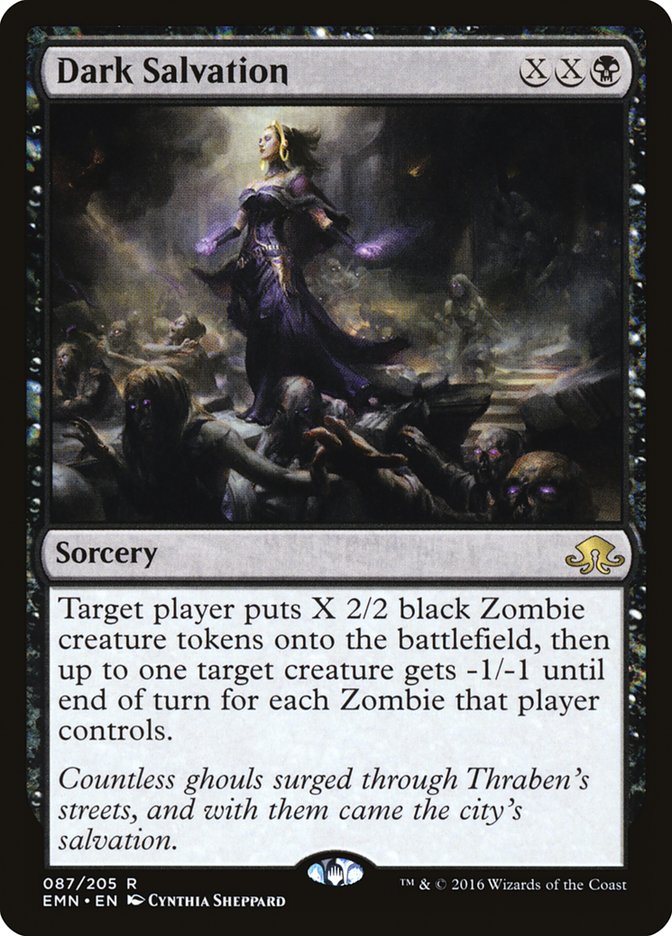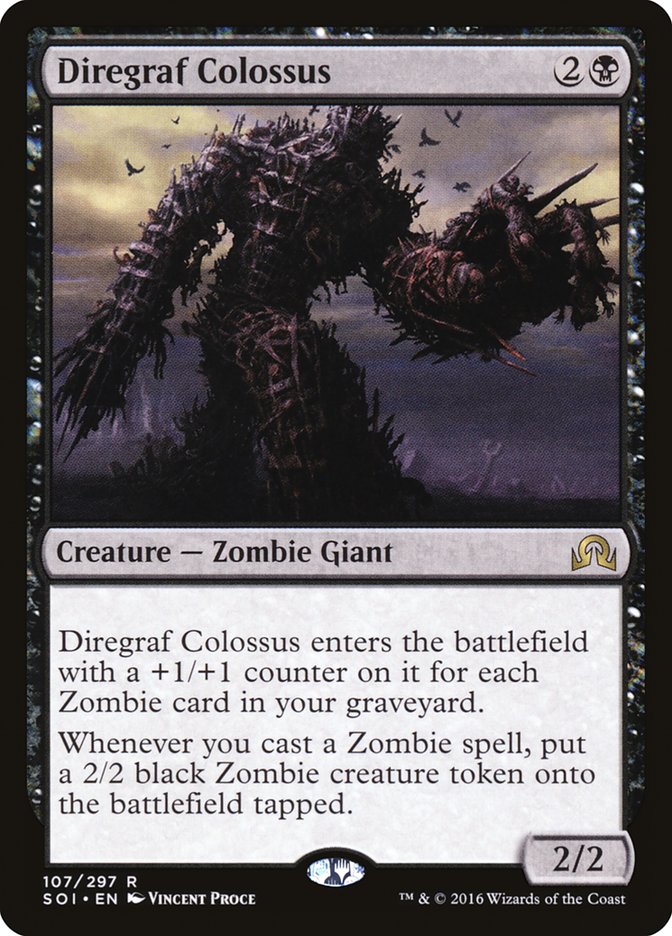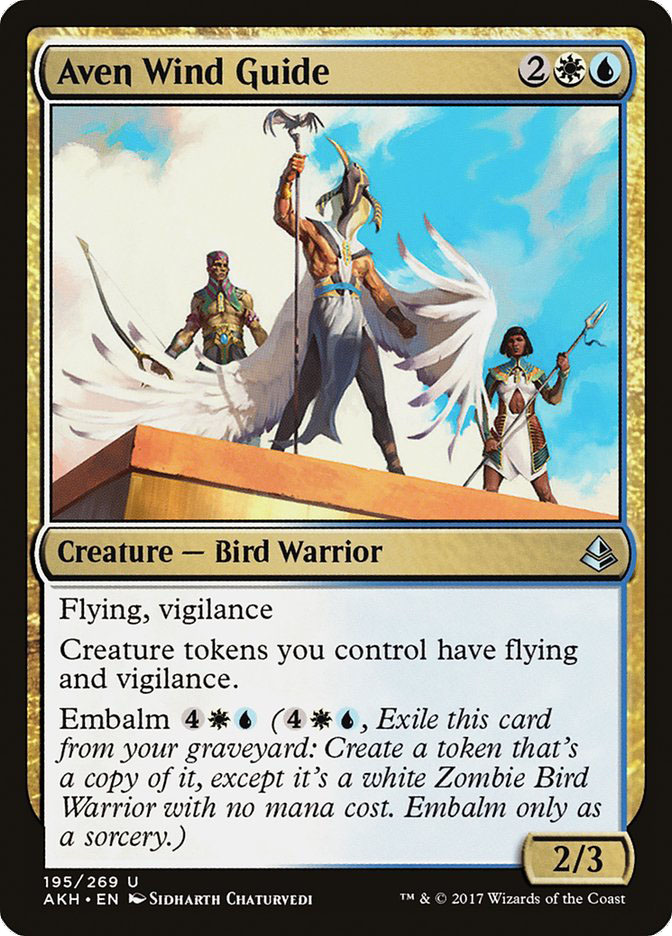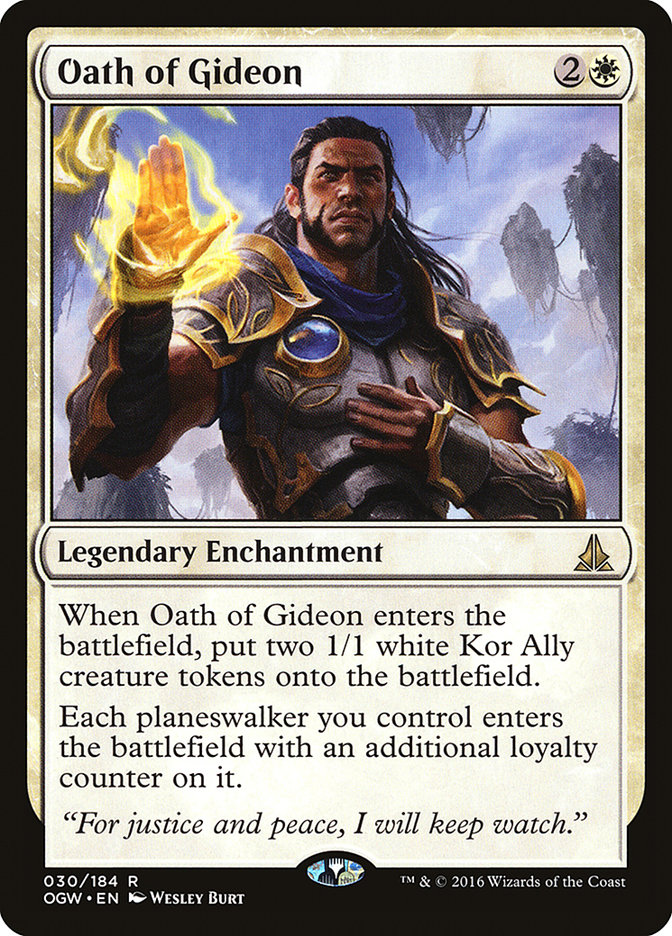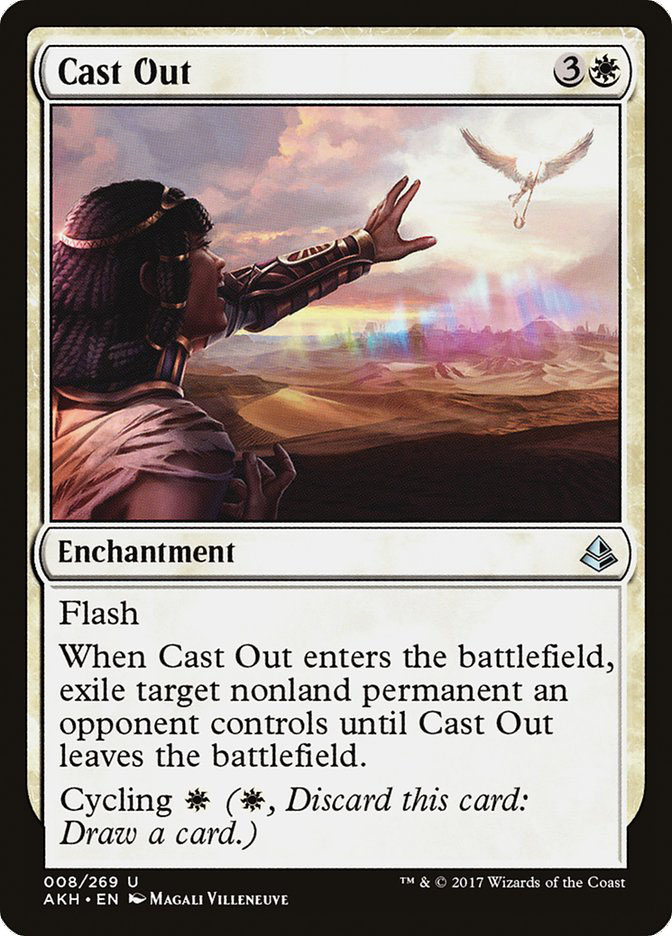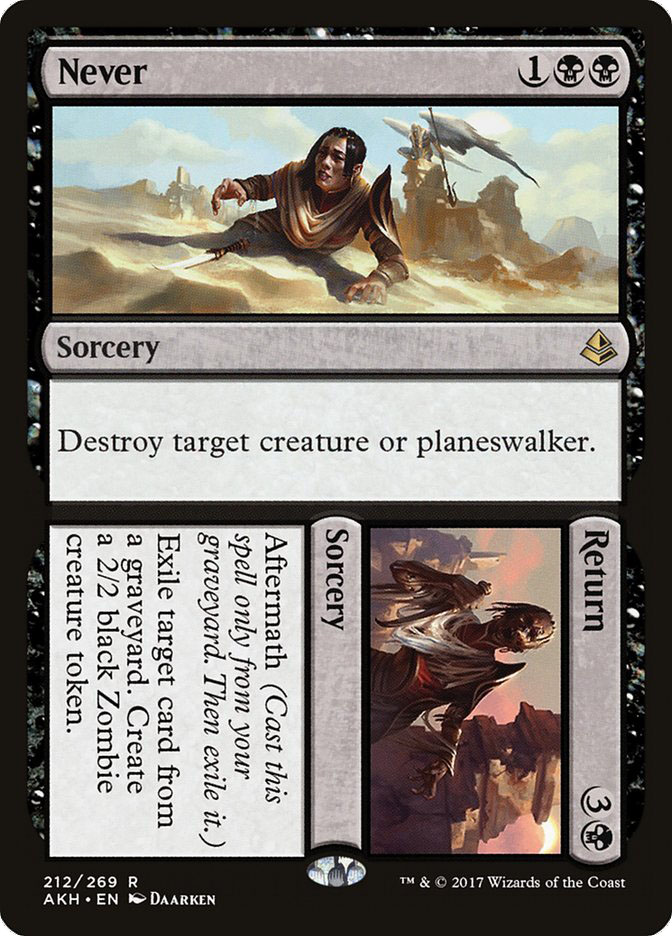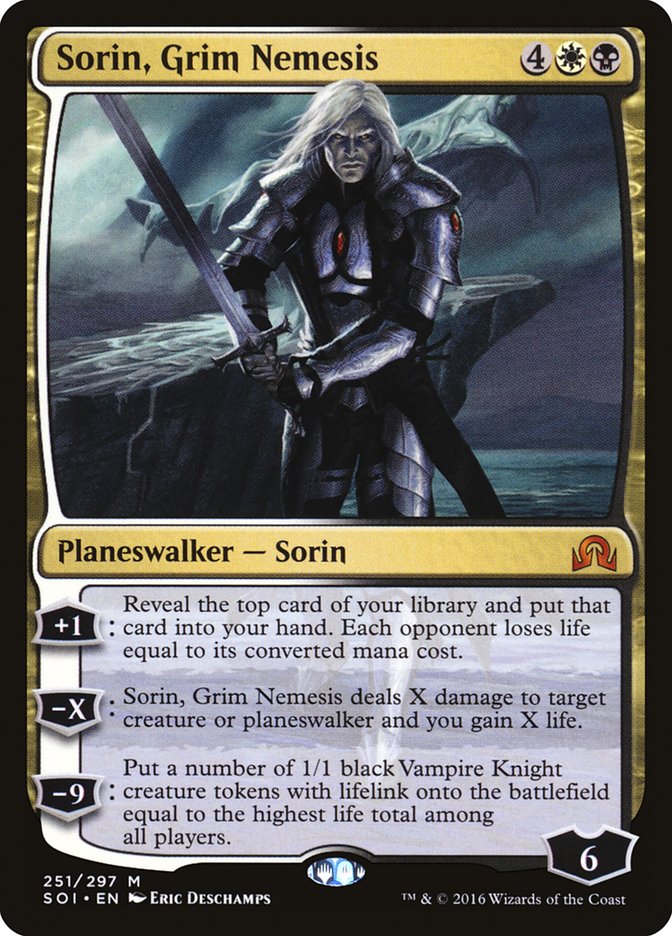Every aggro player has been there before. Your opponent stabilizes at two life in your Draft, Constructed match, or Commander pod. You touch the top of your deck, hoping to draw a burn spell, an Overrun, something. Your opponent’s life total would fall over from a stiff breeze! You’ve got an army of creatures up to bat for you, but none can crack you through. Inevitably your opponent draws more creatures, more pressure, and you watch the two life get bigger and bigger behind your foe’s growing battlefield state. But not you; you draw the fourteenth land in your fifteen-land deck, cursing the cut your opponent made to your shuffled deck before the game started.
So close.
The flavor of so-close might differ, but that feeling is still there. The ability to get within a life point or two of finishing a game, only to gaze longingly at it as it slips away, is one that is uncomfortably familiar. They stand out in our mind and tilt our mental game so far we turn sideways. We can’t shake them, and we love to share those stories with our friends. “If I’d just drawn ‘X,’ I’d have killed them next turn.”
As always, though, Standard, and in this case Amonkhet, gives us a way out, albeit in an unusual and difficult-to-evaluate package: Temmet, Vizier of Naktamun.
Blue and white have traditionally been the colors of tempo-oriented aggro, moving quickly enough with cheap, conditional spells and evasion to get your opponent to the point where they just can’t answer you with the same speed your putting out. Temmet, Vizier of Naktamun is a subtle change to that paradigm as traditional tempo in Standard transitions to a more midrange, value-oriented plan. Without effects like Vapor Snag and Feeling of Dread, that archetype likely won’t exist for a long while. This is where we are now, and as much as I love Unsummon, I like the new direction.
If you’re like me, you gave Temmet, Vizier of Naktamun a cursory glance, as you would any low-cost legendary creature in a potentially powerful combination. If you’re also like me, you probably read its first ability as “target creature gets +1/+1 and can’t be blocked,” instead of “target creature token.” Unfortunate, but understandable; giving any creature this bonus for no mana would be a little stupid, especially because Temmet, Vizier of Naktamun could then target itself. And it could reanimate itself with embalm? Too good. This, my friends, is a brew-around-me.
Tokens have made a huge resurgence in the popular B/X Zombie decks we’ve seen lately, as well as through tried-and-true favorites like Gideon, Ally of Zendikar. Temmet, Vizier of Naktamun has a fairly strict color profile, though; still, white, and its enemy black, have plenty of tokens to bring to the table.
Creatures (17)
- 2 Ayli, Eternal Pilgrim
- 4 Thraben Inspector
- 3 Master Trinketeer
- 2 Angel of Invention
- 4 Metallic Mimic
- 2 Yahenni, Undying Partisan
Planeswalkers (4)
Lands (25)
Spells (14)

A while ago, Hidden Stockpile caught my eye amongst the bizarre cards we saw with the revolt mechanic in Aether Revolt. As I considered cards that pushed the power of tokens, Hidden Stockpile was one of the first to come to mind. Combined with other tokens-matter cards both from previous sets and Amonkhet, we could create a set where tokens aren’t something to get eradicated by bounce, sweepers, and Declaration in Stone; they can be a fun theme to drive towards.
Creatures (12)
- 2 Ayli, Eternal Pilgrim
- 4 Thraben Inspector
- 2 Spell Queller
- 2 Temmet, Vizier of Naktamun
- 2 Aven Wind Guide
Planeswalkers (4)
Lands (27)
Spells (17)
Sideboard

Unlike the B/W deck from January, this one pursues a more hands-off approach. The previous deck was about building a wide deck in a relative absence of sweepers in the metagame at the time. Now, we’re looking at getting value, playing well-costed threats, and going for the jugular at the right moment while building a battlefield we can be happy with, even if it isn’t perfect. It’s more resilient, more precise, and a little more careful with its application. The previous deck could get a perfect curve or bottom out against removal. This deck can weather the storm of Sweltering Suns without a problem.
Creatures
I’ll stop playing Thraben Inspector the moment it stops drawing me free cards and putting two relevant permanents onto the battlefield for one white mana. As with the previous iteration, I like that Hidden Stockpile can “convert” the Thraben Inspector into a token, and both that death and the death of the Clue token would trigger revolt. Ayli, Eternal Pilgrim is a transplant from the previous edition as well, and that’s about where the similarities end.
Temmet, Vizier of Naktamun is a tough one to figure up the right number for. On one hand, having four seems fine, even as a legendary creature, just because it will draw a good deal of ire, and it’s not a “win-more” card; if you have one surviving on the battlefield and one in hand, you’re probably winning. Two seems decent, as you can resurrect it in the mid-game to keep the pressure on or late-game to close out a close race. It’s not the easiest card to cast, especially in a three-color deck, so any more than this seems risky.
Aven Wind Guide was unavailable before Amonkhet, and it provides the Levitation the deck needs to break a stalemate hard. It’s less applicable than Temmet, and its function is similar. What I like about it is the ability to embalm. It provides an effect similar to Moondrakes of Nephalia, a card you think about so little that you didn’t even realize that’s not a real Magic card, this is the real Magic card. The fact that it comes down for a reasonable rate and provides a bit of that tempo early on is not irrelevant. The nice thing is, as long as you get a swing in, the fact that it dies won’t make your creatures suddenly tap mid-combat. The turn it granted you in advantage is worth something.
Spell Queller has fallen out of favor a bit, mostly because the removal we have is pretty good at killing it. Still, it’s not a perfect fit, and Spell Queller provides plenty of pressure on its own, even if you can’t reliably counter something with it. Nephalia Seaskate is a pretty good Limited trick, right?
Spells
Fatal Push, especially in a deck that can reliably support revolt, is as close to Tragic Slip or Dismember as we’re going to get, and that’s probably a good thing; for those of you who didn’t play during the 2012 season of Standard, Dismember, in my opinion, was not okay from a development perspective.
Hidden Stockpile gets better in multiples. You can chew up one Servo, get two, and trigger revolt for Fatal Push while scrying one. Throw an army of Servos into battle, sacrifice the one that will die in combat anyway, and net a positive Servo.
Oath of Gideon was not included in the last one, but the ability to trigger revolt from playing a second copy seemed too good to ignore; not sure how I missed it last time, favoring one-and-done Servo Exhibition over the enchantment, but I like the Oath this time around.
Cast Out is one of those cards I undervalued at Amonkhet’s release, but I can’t imagine the format, and many of my decks, without it now. The four-mana price tag seemed clumsy, but the cycle really makes this an easy inclusion in most decks; heck, plenty of green-capable decks are maindecking Dissenter’s Deliverance, so why not a set of Cast Out in a deck with lots of white mana sources? Finally, a single copy of Dark Salvation provides a slow-and-steady deck a way to break the game open. The deck has 27 lands, and in the event you’ve got so much mana you’re ready to burst, Dark Salvation bleeds it off, all while killing a creature and providing an army of tokens to lift off the ground or sneak by your opponent by removing their ability to block.
Lands
As just stated, this deck has about the max land count a deck can have these days, but I think that’s what makes this deck function. It doesn’t have eight copies of Anticipate, but it has eight cycling lands and enough room to include token leverage tools like Westvale Abbey. Having a deck with 23 lands and eight of them being cycling duals is a recipe for trouble, so do yourself a favor and bump things up. Don’t believe me? Do what I did and hone your building fundamentals with Emma Handy’s exceptional refresher. By and large this deck needs white mana; there aren’t any blue and black spells in this deck, and blue spells in this deck are not independently blue. The base is built to make sure you have a blue when you need it, but never too much, as you won’t even need more than one source until the second game.
Sideboard
Taking the current metagame into account is difficult, but even though I made this sideboard while I was out of town, it required little modification until I was happy. Spell Queller, in particular, does a great job stuffing removal-light Aetherworks Marvel decks by snatching their eponymous artifact from the stack and keeping the pressure on for them to draw another. Similarly, Vizier of Many Faces can copy your opponent’s best threat on a first and second cast.
Never // Return has a nice synergy with the deck’s biggest issues: planeswalkers and graveyard recursion a la Scrapheap Scrounger. It even makes a 2/2 Zombie token, perfect for boosting with Temmet, Vizier of Naktamun! Dawn // Dusk recovers every creature this deck can cast after it dies, and the sweeping effect is pretty important in many matchups that push the power of their creatures high enough.
Negate is, as always, a nice catch-all, but I like it as a way to supplement Spell Queller, as the deck produces enough threats that they’ll be removal-light, and if they want to spend a post-sideboard sweeper to kill a Spell Queller, I think I’m fine with that.
Sorin, Grim Nemesis is one of those cards that has seen considerable play over the last year or so without a lot of individual attention. Yes, it’s a good six-drop planeswalker akin to Chandra, Flamecaller, a card basically no one talks about anymore, but perhaps we should, given the resurgence of the token strategies of the format. Anyway, Sorin, Grim Nemesis isn’t nearly as good as normal in this deck as he might be in other midrange strategies, mostly because of the 27 lands and the one- and two-drops. Leveraging Oath of Gideon and a couple pluses can put Sorin, Grim Nemesis over the top. Just remember, he’s not an auto-include; think about your lines with him. I’ve seen lots of missteps with this curve-topper, and the next misstep doesn’t have to be you.
This deck is good without Temmet, Vizier of Naktamun, but it’s certainly more fun with it in there; a few test matches proved that the familiar all-stars of the format were doing most of the work, but adding blue gave this deck a different angle, especially after sideboarding. The deck was prepared to handle any threat the format could throw at it, provided the right cards lined up at the right time, and Spell Queller proved that, in a world of Magma Spray and un-revolted Fatal Push, it actually does just fine. The deck had game against all but the fastest of Human aggro decks, but it did fine against the brand of Temur artifact decks that happen to be popular at my shop, and the ability to sneak past an army of Whirler Virtuoso Thopters was satisfying to say the least. In this regard, both Temmet and Aven Wind Guide did a great job holding the game up.
I definitely like this brew, as I’ve spilled plenty of digital ink about it, and so much so that I ran out of time to discuss my favorite Temmet, Vizier of Naktamun build, as well as some matches I played with it. No worries, though; I’ll be hurrying back next week to share it with you!
Bennie Smith, our resident casual Commander expert, just featured Temmet in a 100-card deck. What did you think of his strategy, and what ideas did it give you of the strength of Temmet in both Standard and Eternal formats?


